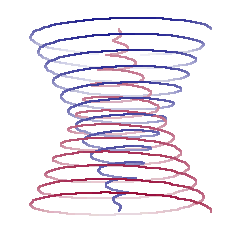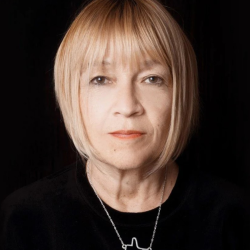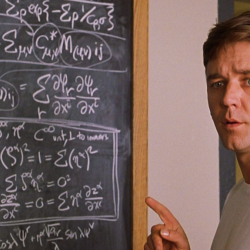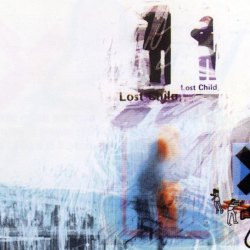We humans are a bit obsessed with balance…
For Aristotle, ultimate happiness demands maintaining the ‘Golden Mean’; that sunny sweet spot between excess and deficiency. In Buddhism, the ‘Middle Way’ separating self-satisfaction and self-denial leads to enlightenment. Our brains are hardwired towards symmetry. Today we catalogue our macros, carefully measure our screen time and crave the ideal work/life balance. In the context of our capricious, intractable world, the allure of equilibrium is clear. If we spin all of our plates in perfect rhythm, perhaps we’ll find stability — and in stability, there’s control.
‘The world is a great confusion,’ wrote Montaigne in 1580. Whilst our world has never felt stable, our current chaos is distinct in its unprecedented reach and speed. The Digital Big Bang birthed an explosion of information; an ever-accessible torrent of news, content and opinions, dissected and polarised across the soapbox of social media. Globalisation intensifies our economic and geopolitical interdependence, resulting in disruptions that ripple across borders. Advancing tech has created new fears around cyberattacks and technological unemployment. We’re rudderless in a sea of disinformation, under siege from Orwellian surveillance and speeding towards climate catastrophe. Amidst all of this relentless change, the quest for balance not only feels instinctual, but imperative.
The second coming
In 2018 Fintan O’Toole proposed the ‘Yeats Test’ as a barometer for the global condition: ‘The more quotable Yeats seems to commentators and politicians, the worse things are.’ Published in 1920, WB Yeats’ poem The Second Coming may just be, as the Paris Review writes, ‘the most thoroughly pillaged piece of English literature’. It’s been disassembled to title myriad books, most notably Chinua Achebe’s Things Fall Apart and Joan Didion’s Slouching towards Bethlehem (more on that later). Its words have inspired music by Joni Mitchell and Van Morrison, and feature in a whole slew of films.
Let’s take a look at The Second Coming in full:
Turning and turning in the widening gyre
The falcon cannot hear the falconer;
Things fall apart; the centre cannot hold;
Mere anarchy is loosed upon the world,
The blood-dimmed tide is loosed, and everywhere
The ceremony of innocence is drowned;
The best lack all conviction, while the worst
Are full of passionate intensity.
Surely some revelation is at hand;
Surely the Second Coming is at hand.
The Second Coming! Hardly are those words out
When a vast image out of Spiritus Mundi
Troubles my sight: a waste of desert sand;
A shape with lion body and the head of a man,
A gaze blank and pitiless as the sun,
Is moving its slow thighs, while all about it
Wind shadows of the indignant desert birds.
The darkness drops again but now I know
That twenty centuries of stony sleep
Were vexed to nightmare by a rocking cradle,
And what rough beast, its hour come round at last,
Slouches towards Bethlehem to be born?
An ouroboros of ideologies

Yeats’ concept of the gyre is fundamental to understanding The Second Coming. Imagine two spiralling cones: one is balanced on its apex, representing one historical era, and the other on its base, signifying another. As time progresses, these cones rotate; the dominant cone reaches its climactic point, retracts, and the balance shifts to begin a new era. For Yeats, these turning cones represent the patterns of human civilisation — a continuous cycle of birth, decline and rebirth.
Societal change demands the unravelling of established order. In the midst of these significant shifts, the ‘centre’ — our current ideologies, values and the ways that we operate — cannot hold. When Yeats penned the poem in January 1919, the world was fraught with upheaval. The dust had barely settled from World War I and the Irish War of Independence was unfolding on his doorstep. Spanish Flu seared through Europe, and almost killed his wife, Georgie Hyde-Lees. The very fabric of society had torn, and the certainties of the past were nebulous at best. Yeats’ poem emerged as a framework to comprehend the chaos; an Oracle to illuminate the path through the gloom.
The unravelling centre
The Second Coming’s ambiguous, apocalyptic stanzas have made it a lasting literary prism, refracting humanity’s existential anxieties across the generations. Its prophetic appeal lies in its ability to mirror the tumultuous realities of our changing times.
Joan Didion harnessed this same sense of societal disintegration in her seminal work, Slouching Towards Bethlehem. Her exploration of 1960s counterculture’s fall from grace captures the fragmentation of an idealistic era. Her prescient, unflinching observations in the Haight-Ashbury district paint a portrait of a society in flux. She writes: ‘The centre was not holding. Adolescents drifted from city to torn city, sloughing off both the past and the future as snakes shed their skins, children who were never taught and would never now learn the games that had held the society together.’
These encounters with young idealists, disillusioned yet fervently searching for meaning, remain timeless and represent the realities of many young people today. As ideals of peace and love clashed with the onset of cynicism in the sixties, Didion reflected: ‘The chaos of the streets seemed to be reproduced in the lives of the people living in them.’ In this context, perhaps Yeats’ ‘rough beast’ symbolises the unbridled energy coursing through the veins of a restless, yearning generation; a force that shakes the foundation of societal norms. The centre cannot hold — but should we want it to? Is our quest for balance leading us down a path away from Bethlehem?
Be the rough beast
‘The centre cannot hold’ is not merely a lamentation of societal disarray; it’s a revelation about the fluidity of human existence. In the chaos described by Yeats and captured by Didion, there’s a lesson for society today: equilibrium isn’t a fixed point, but a continuous adaptation to change. ‘Mere anarchy’ can lead to innovation, growth and renewal. In moments of upheaval, old paradigms and the things that held us back dissolve, creating room for fresh ideas and perspectives. From the Romantic poets to the Beat Generation, history provides countless examples of how creativity flourishes in the midst of turbulent societal change, birthing novel concepts and progressive ideologies.
Yeats put it best himself: ‘The best lack all conviction, while the worst / Are full of passionate intensity.’ Whilst he intended this as criticism, in our contemporary context, passionate intensity carries a different resonance. It signifies our willingness to engage in the world with abandon; to challenge injustices and pursue our goals with unwavering zeal. It takes passionate intensity to drive social change or advocate for equality; it’s a potent force that ensures the turning gyres usher in positive transformation.
Our world is and will always be dynamic. It’s moving ever faster and soon (or perhaps for some, already) our spinning plates will inevitably fall. Perhaps equilibrium isn’t a serene midpoint, but a balance between the stability of wisdom and the daring of innovation. We can’t resist change, so we must accept the opportunity to adapt, learn, fail, try again and transform. Embracing chaos can drive us to reimagine, rebuild and redefine the future. Let us be the rough beast moving with purpose towards the unknown.
Featured image: Nathan Dumlao / Unsplash
































